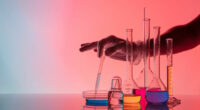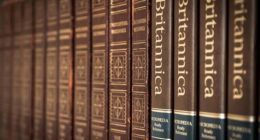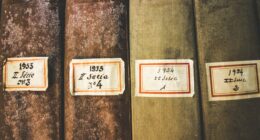A dot is a single point with no dimension, while a circle is a closed curve consisting of all points equidistant from a central point.
In this article, we will explore the key distinctions between a dot and a circle and understand what sets these basic shapes apart in a practical context. We will delve into the various uses and characteristics of dots and circles, providing a comprehensive comparison between the two shapes. By the end of this article, you will have a clear understanding of the differences between dots and circles and how they are applied in different contexts.
Key Takeaways:
- The main difference between dots and circles lies in their characteristics and properties.
- A dot is a singular point with no dimensions, while a circle is a two-dimensional shape with a defined circumference, diameter, radius, and area.
- Dots are often used symbolically or abstractly, while circles have practical applications in various fields.
- Dots have versatile uses in design, typography, and mathematics, while circles are commonly found in geometric design, engineering, and physics.
- Understanding the visual contrast and aesthetic impact of dots and circles can aid in effective communication and design compositions.
What Is a Dot?

A dot is a small, circular mark often used to represent a single item or idea. It’s the most basic shape, with no size or dimensions. Dots show up in many areas like typography, design, math, and coding. They’re handy for things like making lists clearer, adding patterns in designs, or standing in for unknown values in equations.
In typography, dots are like bullet points, helping to organize text. In design, they create cool textures or gradients. And in math, they stand in for things we don’t know yet. Overall, dots are super versatile and useful in lots of different situations.
| Characteristics of a Dot | Uses of a Dot | Dot Symbolism |
|---|---|---|
| Dots are small, round marks or points. | Dots can be used as bullet points, space indicators, or variable placeholders. | In some cultures, dots represent singularity or the beginning of something. |
| Dots have no dimensions or size. | They can be used to create patterns, textures, or gradients. | Dots can also symbolize unity or a singular point of focus. |
| Dots are versatile and can be used in typography, graphic design, mathematics, and programming. | Dots are commonly found in lists, designs, equations, or code. | The symbolism of dots can vary across different cultures and contexts. |
What Is a Circle?

A circle is a two-dimensional geometric shape defined by a set of points that are equidistant from a fixed center point. It is a closed curve with a constant distance from the center to any point on the circumference. Circles have various properties, such as a constant circumference, diameter, radius, and area.
They are often used in geometry, physics, engineering, and design. Circles can be seen in everyday objects, such as wheels, coins, plates, and clocks. They are also used symbolically to represent unity, completeness, and harmony due to their perfect and symmetrical nature. The concept of circles is fundamental in mathematics and has numerous applications in different fields.
Key Differences Between Dots and Circles
While dots and circles may seem similar at first glance, there are several key differences between them. Let’s explore the characteristics and properties that set them apart:
- Dot vs. Circle Characteristics: Dots are single points with no dimensions, while circles are two-dimensional shapes with a defined circumference, diameter, radius, and area. Dots have no size or measurements, whereas circles have specific measurements that can be calculated.
- Dot and Circle Distinctions: Dots are often used as individual elements, while circles are used to represent a specific shape. Dots can be scattered, grouped, or arranged in a pattern, while circles create a continuous shape with rounded edges.
- Dot vs. Circle Properties: In terms of properties, dots are often used symbolically or abstractly, conveying concepts like unity or singularity. On the other hand, circles have practical applications in various fields due to their defined measurements and geometric properties.
To better understand these differences, let’s take a closer look at a comparison table:
| Attributes | Dots | Circles |
|---|---|---|
| Dimensions | No dimensions | Two-dimensional |
| Size | No size or measurements | Specific measurements (circumference, diameter, radius, area) |
| Usage | Individual elements, patterns | Representation of a specific shape |
| Symbolism | Often used symbolically or abstractly | Can have various symbolic meanings (unity, wholeness, cycles) |
| Practical Applications | Symbolic or abstract applications | Design, engineering, mathematics |
Understanding these distinctions is crucial for effectively utilizing dots and circles in different contexts. Whether it’s in design, mathematics, or other fields, recognizing the unique characteristics of dots and circles allows us to leverage their properties to their fullest potential.
Practical Applications of Dots
Dots are incredibly versatile and find practical applications in various industries and disciplines. Let’s explore some of the key areas where dots are widely used:
In Design
In the field of design, dots play a crucial role in creating visually appealing compositions. They can be used to craft intricate patterns, add textures, or create gradients. By strategically placing dots, designers can enhance the visual interest and overall aesthetics of their artwork. Whether it’s in graphic design, fashion design, or interior design, dots bring a unique and eye-catching element to the creative process.
In Typography
Dots find extensive usage in typography to help convey information in a visually clear and organized manner. They are commonly employed as bullet points, aiding in structuring content into easily scannable and readable chunks. Additionally, dots are also used to indicate breaks or spaces in text, facilitating a smooth flow of information. These small but powerful dots greatly improve the readability and comprehension of written material.
In Mathematics
In the realm of mathematics, dots serve as valuable symbols with numerous applications. They are commonly used to represent variables or unknown values in equations, making complex mathematical concepts more manageable and concise. Furthermore, dots are also used as decimal points in numerical expressions, ensuring precise and accurate calculations. The inclusion of dots in mathematical notation helps in conveying information efficiently and promoting a standardized approach to solving problems.
| Field | Practical Uses of Dots |
|---|---|
| Design | Create patterns, textures, and gradients |
| Typography | Indicate bullet points and breaks in text |
| Mathematics | Represent variables and decimal points in equations |
As demonstrated in the table above, the practical uses of dots extend beyond specific fields, making them an essential element across various disciplines.
Practical Applications of Circles
Circles, with their unique properties and perfect symmetry, find practical applications in various fields. Let’s explore some of the key uses of circles:
In Geometric Design
In the realm of geometric design, circles serve as a foundation for creating symmetrical patterns, mandalas, and intricate geometric shapes. Designers harness the harmonious nature of circles to evoke a sense of balance and visual appeal in their compositions. Whether it’s in graphic design, textile patterns, or architectural motifs, circles play a vital role in shaping the aesthetics of geometric designs.
In Engineering
Engineers rely on circles to design precision gears, bearings, and curved structures. Circles enable efficient power transmission and smooth rotational movement in machinery. Additionally, circles are utilized in architectural designs, where rounded elements provide structural support, maximize strength, and enhance visual aesthetics. From mechanical engineering to product design, circles form the building blocks of many engineering marvels.
In Physics
Physics enthusiasts recognize the fundamental role of circles in understanding the motion of objects in circular paths or orbits. Circles are instrumental in calculating concepts such as centripetal force and rotational motion, guiding engineers and scientists in designing efficient systems. Whether it’s the motion of planets around the sun or the mechanics behind amusement park rides, circles provide the essential framework for analyzing and predicting physical phenomena.
These examples just scratch the surface of the practical applications of circles. Their versatility, symmetry, and mathematical precision make them indispensable in fields such as art, architecture, design, engineering, and physics.
Now, let’s take a closer look at how circles are employed in various industries:
| Industry | Practical Applications of Circles |
|---|---|
| Architecture | Curved facades, domes, round windows, circular skylights |
| Automotive | Circular wheels, tires, engine components |
| Fashion | Hoop earrings, circular prints, buttons |
| Mechanical Engineering | Gears, bearings, pulleys |
| Product Design | Circular containers, knobs, handles |
The versatile practical applications of circles highlight their significance in shaping the world around us. Whether in design, engineering, or physics, circles continue to leave a lasting impact with their elegance and functionality.
Dot vs. Circle in Design
In the realm of design, the choice between using dots or circles heavily relies on the desired aesthetic and composition. Each shape brings its own unique qualities to the table, allowing designers to create visually captivating and balanced designs. Let’s explore the distinct characteristics of dots and circles and how they contribute to the overall design:
Dot Aesthetics and Composition
Dots can be employed to craft a minimalist or abstract visual style. Their simplicity and singular presence can lend a clean and streamlined look to a design. By utilizing dots, designers can create a sense of understated elegance and sophistication. These small marks can be scattered or arranged in patterns, enhancing visual interest and drawing the viewer’s attention. The size, spacing, and arrangement of dots play a pivotal role in the overall composition, allowing designers to establish a dynamic visual rhythm.
Circle Aesthetics and Composition
When it comes to circles, they offer a sense of symmetry and harmony to a design. These rounded shapes can evoke a feeling of wholeness and balance. Circles can be used as focal points, guiding the viewer’s gaze towards a specific element within the design. Furthermore, circles can act as elements of balance, ensuring that the visual composition feels harmonious and visually pleasing. Designers can leverage the shape, size, and arrangement of circles to create a well-balanced design that captures the viewer’s attention and maintains visual harmony.
Dot and Circle Balance
The proper balance between dots and circles is vital in creating visually appealing designs. Designers must consider the message, mood, and objectives of the design when deciding whether to incorporate dots or circles. By thoughtfully integrating these elements into the composition, designers can achieve the desired visual outcome. Dots can add a touch of minimalism or abstraction, while circles can infuse a sense of symmetry and harmony. Finding the right balance between the two shapes allows for a cohesive and impactful design that effectively communicates with its intended audience.
Overall, both dots and circles possess their own unique aesthetic appeal and can be creatively employed to achieve specific design goals. The careful consideration of dot and circle aesthetics, composition, and balance allows designers to create visually captivating and harmonious designs that leave a lasting impression.
Dot vs. Circle in Symbolism
Dots and circles hold great symbolic significance in various cultures and traditions. These simple shapes convey profound meaning and are often associated with unity, wholeness, and the circle of life.
Dot Symbolism:
Dots are commonly associated with unity and singularity. They represent a singular point of focus or a starting point. In many cultures, dots symbolize the beginning of something new, the essence of creation, and the potential for infinite possibilities.
Circle Symbolism:
Circles, on the other hand, are powerful symbols of unity, wholeness, and perfection. The circular shape represents cycles, eternity, and the infinite. It embodies the idea that everything is interconnected and that life is a continuous journey without a beginning or an end. Circles can also symbolize protection and harmony due to their lack of edges or weak points.
The symbolism of dots and circles can vary across different cultures and contexts. However, their association with unity, completeness, and the eternal nature of life is a common thread in many interpretations.
| Symbol | Meaning | Representation |
|---|---|---|
| Dot | Unity, singularity, beginning | • |
| Circle | Unity, wholeness, perfection, cycles, protection |
Understanding the symbolism of dots and circles allows us to delve deeper into the collective consciousness of humanity. These shapes tap into our fundamental understanding of existence, unity, and the interconnected nature of all things.
Understanding the Visual Contrast between Dots and Circles
The visual contrast between dots and circles lies in their shape, size, and composition. Dots, being singular points, often create a sense of minimalism and simplicity. They can be small or large, densely packed or scattered, and can create visual interest through repetition or patterns.
Circles, on the other hand, have a defined shape and size. They can create a focal point, balance, or symmetry in a composition. The curves and rounded edges of circles often add a sense of softness and harmony to a design. Understanding the visual impact of dots and circles can help designers make informed choices when creating visual compositions.
Visual contrast between dots and circles:
- Dot and circle visual perception: Dots can be perceived as individual points, while circles are recognized as complete shapes with boundaries.
- Dot vs. circle visual impact: Dots can create a minimalistic and abstract feel, while circles can add focus and balance to a design.
- Dot and circle aesthetics: Dots offer simplicity and versatility, while circles provide a sense of symmetry and harmony.
By understanding the visual contrast between dots and circles, designers can effectively utilize these shapes to create visually appealing compositions that communicate their desired message.
Visual Contrast Examples:
Conclusion
In conclusion, dots and circles are two fundamental shapes that have distinct characteristics and diverse applications. Dots, as singular points without dimensions, are often used symbolically or abstractly to represent a single unit or element. On the other hand, circles, as two-dimensional shapes, have defined measurements, practical uses, and symbolic meanings.
Both dots and circles play important roles in various fields, such as design, typography, mathematics, and more. Understanding the differences between dots and circles and their respective applications empowers individuals to make informed decisions when using these shapes in different contexts.
Whether you’re creating a design composition, solving a mathematical problem, or exploring cultural symbolism, mastering the understanding of dots and circles enhances our ability to effectively communicate and perceive visual information.
FAQ
What is the difference between a dot and a circle?
A dot is a small, round mark or point with no dimensions, while a circle is a two-dimensional shape with defined measurements and a constant distance from the center to any point on the circumference.
What are the characteristics of a dot?
A dot is a single point with no size or measurements. It is often used symbolically, abstractly, or to represent a specific element in various contexts.
What are the characteristics of a circle?
A circle is a two-dimensional shape with a constant circumference, diameter, radius, and area. It is defined by a set of points that are equidistant from a fixed center point.
What are some practical uses of dots?
Dots can be used in design to create patterns, textures, or gradients. They are also commonly used in typography as bullet points or to indicate spaces in text. In mathematics, dots can represent variables or decimal points in numerical expressions.
What are some practical uses of circles?
Circles are used in geometric design to create symmetrical patterns or geometric shapes. They are also used in engineering to create precision gears, bearings, or curved structures. In physics, circles are used to calculate the motion of objects in circular paths or orbits.
How do dots and circles differ in design?
Dots can create a minimalist or abstract look and can be scattered or arranged in patterns. Circles add a sense of symmetry and harmony to a design and can be used as focal points or elements of balance. The size, spacing, and arrangement of dots and circles impact the overall design composition.
What do dots and circles symbolize?
Dots are often associated with unity, singularity, or the beginning of something. Circles symbolize unity, wholeness, and perfection. They can also represent cycles, eternity, or the infinite.
What is the visual contrast between dots and circles?
Dots, being singular points, create a sense of minimalism and simplicity. Circles have a defined shape and size, adding a sense of softness and harmony to a design. The curves and rounded edges of circles create a visual impact.
What are the key differences between dots and circles?
Dots are single points, while circles are two-dimensional shapes. Dots have no size or measurements, whereas circles have defined measurements that can be calculated. Dots are often used symbolically or abstractly, while circles have practical applications in various fields.
What are the key takeaways about dots and circles?
Dots and circles are two distinct shapes with different characteristics and uses. Dots have no size, while circles have defined measurements. Dots have symbolic or abstract meanings, while circles have practical applications in geometry, physics, and engineering.
Source Links
- https://medium.com/@maxheadway/unraveling-the-nuances-of-floating-point-arithmetic-in-javascript-9859c7b19a8a
- https://www.quanthub.com/unraveling-the-world-of-comparison-charts-a-guide/
- https://www.mdpi.com/2076-393X/11/7/1236
Image Credits
Featured Image By – rawpixel.com on Freepik
Image 1 By – vicki4net from Pixabay
Image 2 By – macrovector on Freepik









